
King cobra (Ophiophagus hannah), Wuyishan, Fujian.
Part 4. Wuyishan
Wuyishan mountain range in Fujian is known as a sacred mountain only locally. For most Chinese it as a place where the famous tea is made, and some interesting rock formations exist.
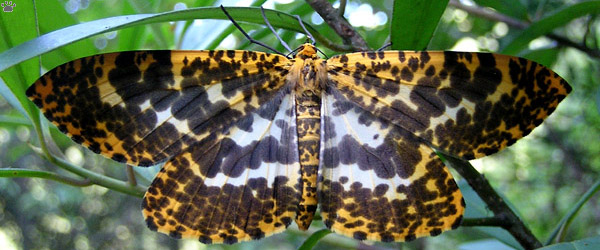
Geometrid moth, Wuyishan. |
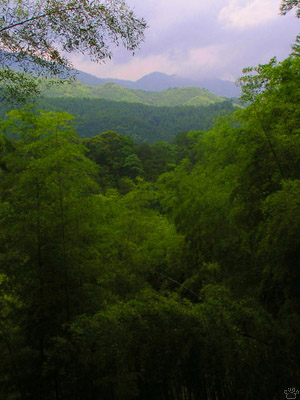
Wuyishan. |
Temples and tourist trails are all in the small northern part of the area; the remaining backcountry is a mosaic of forested mountains and small villages in valleys. It is the largest forest left in China's coastal provinces, and the most beautiful one. |
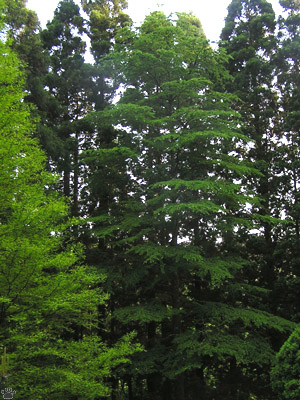
Golden larch (Pseudolarix amabilis), Wuyishan. |

Kukri snake (Oligodon sp.), Wuyishan. |
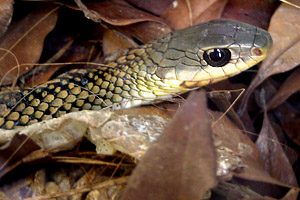
Oriental rat snake (Ptyas sp.), Wuyishan. |
Far into the mountains, there are deep canyons with oldgrowth forests and fast-flowing rivers full of fish and colorful frogs. |
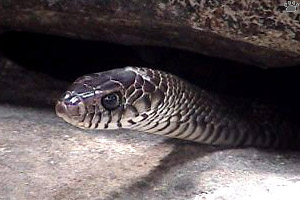
Oriental rat snake (Ptyas sp.), Wuyishan. |
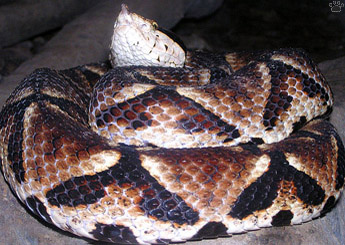 |
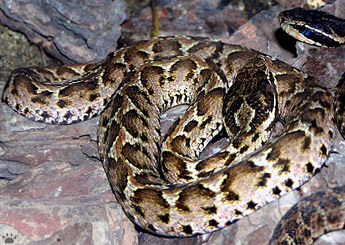 |
| Pit vipers: Agkistrodon acutus (left) and A. brevicaudus. |
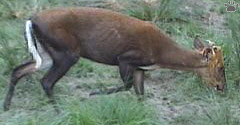
Muntjac deer (Muntiacus crinifrons), Wuyishan. |
Local flora and fauna are a rich mix of typical Chinese species and tropical ones at the northern limit of their range. A few northern species, such as snow deer and junipers, also make their way here. |
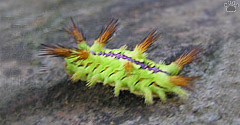
Limacodid caterpillar, Wuyishan. |
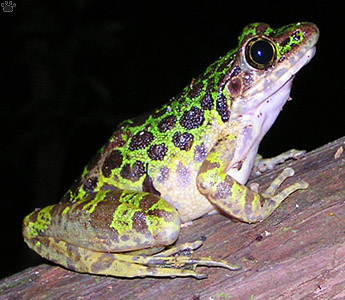 |
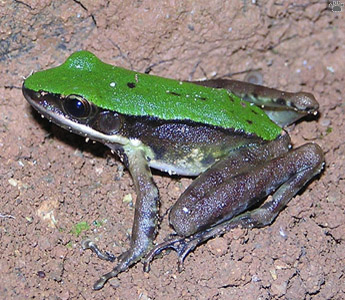 |
| Frogs, Wuyishan. |
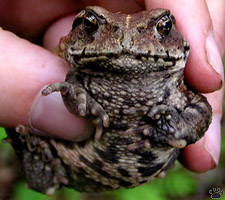
Toad (Bufo sp.), Wuyishan. |
Wuyishan is probably the last place in Eastern China where you can see such rarities as clouded leopard, king cobra, and Oriental black eagle.
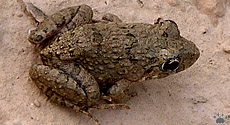
Frog (possibly Rana rugosa), Wuyishan. |

Asian grass lizard (Takydromus sp.), Wuyishan. |

Silver pheasant (Lophura nyctimera), Wuyishan. |
Giant salamander, four species of pheasants, three species of deer and Bengal cat are still common, but not easy to see.
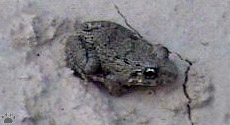
Unidentified frog, Wuyishan. |

Cabot's tragopan (Tragopan caboti), Wuyishan. |
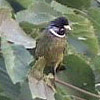
Collared finchbill
(Spizixos semitorques). |

Grey-headed canary flycatchers
(Culicicapa ceylonensis). |
For some reason, birdwatchers don't visit Wuyishan that often. |
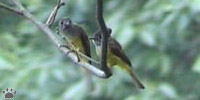
Grey-headed canary flycatchers,
Wuyishan. |
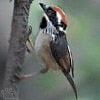
Black-throated tit
(Aegithalos concinnus). |
 |
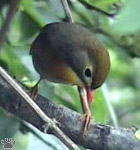
|
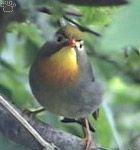
|
 |
| Red-billed leiothrix (Leiothrix lutea), Wuyishan. |
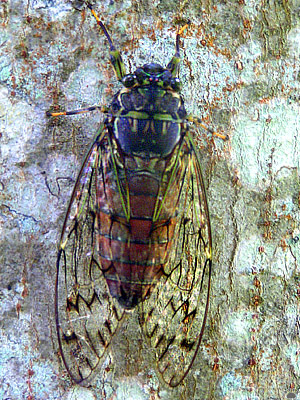
Cicada, Wuyishan. |
For some reason, mountain forests of East Asia, from Ussuriland to Mt. Kinabalu on Borneo, have very high diversity of large nocturnal insects, especially moths. It's not unusual to see up to 100 moth species gathered around a street light. |
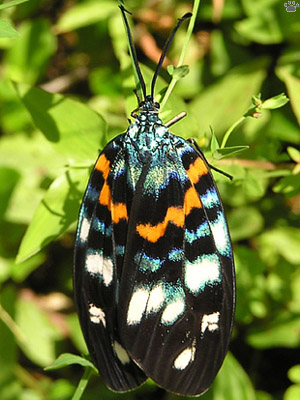
Moth, Wuyishan. |
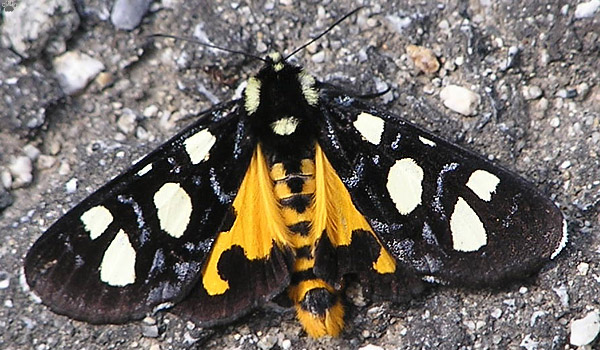
Arctid moth. |
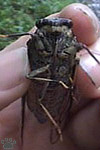
Cicada, Wuyishan. |
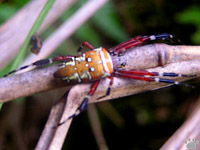
Spider, Wuyishan. |
Diurnal insects, spiders, millipedes and forest snails are also far from boring. |
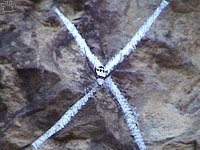
Spider, Wuyishan. |

Cicada, Wuyishan. |
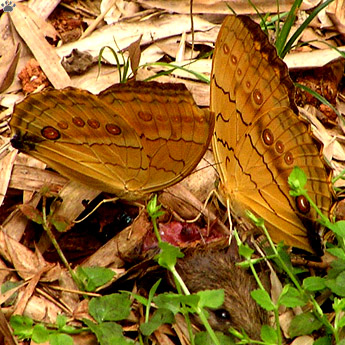
Butterflies feeding on a dead mouse, Wuyishan. |
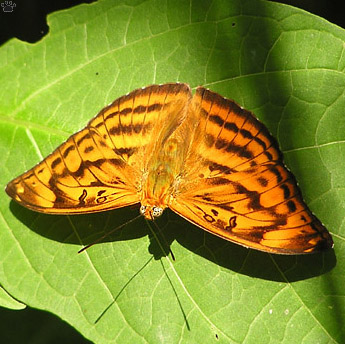
Butterfly, Wuyishan. |
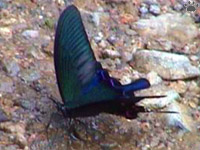
Papilio maackii, Wuyishan. |
Wuyishan is easily accessible by railroad and bus, but to get to the best forests you have to hire a taxi or hitchhike to remote villages, and then walk up long dirt roads. The place is definitely worth the trouble if you are a naturalist - just to see what this part of Asia used to look like. But it is neither as scenic nor as interesting as the mountain described on the next page. |
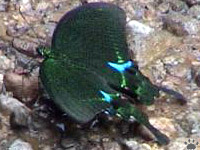
Papilio hoppo, Wuyishan. |
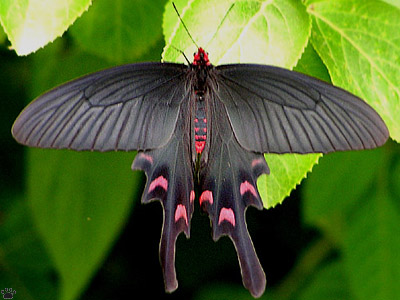
Atrophaneura alcinous, Wuyishan. |
Part 5: Emeishan
Back to Part 3
Home |